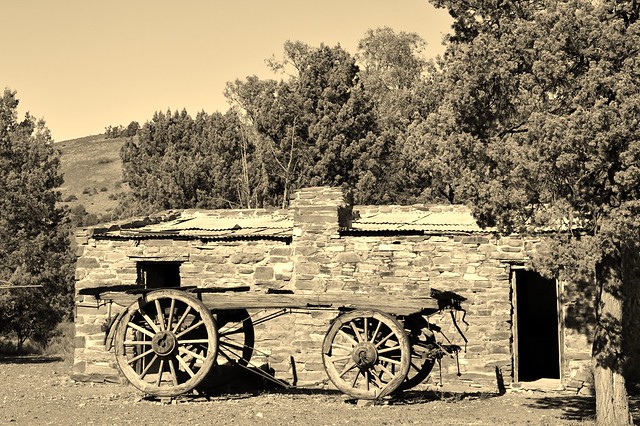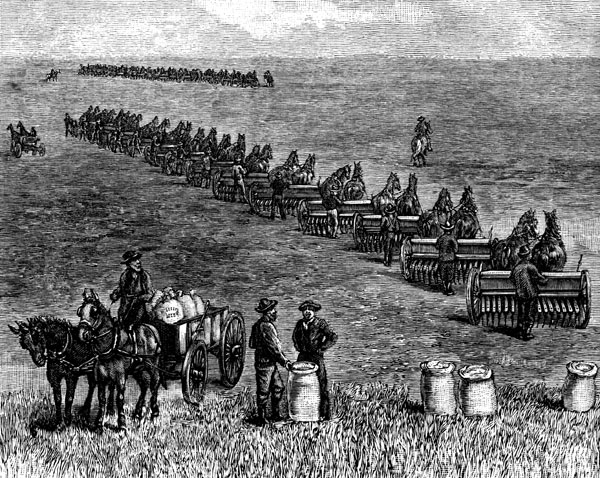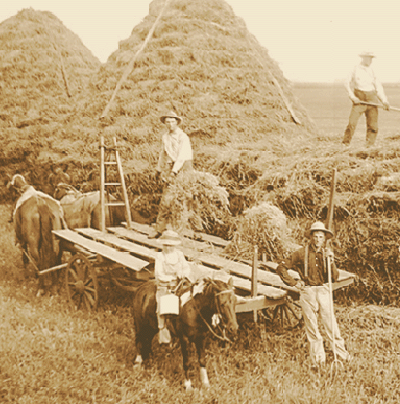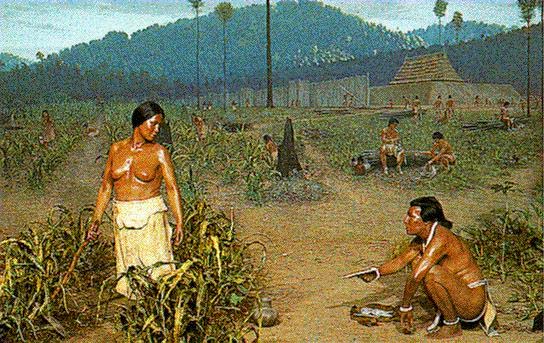Agriculture History Detail
In ancient times, land was generally devoted to agriculture as a means of sustaining life. Later in history, noblemen cultivated lawns as a symbol of status. The lawn showed that the person could have land without devoting it to agriculture. This showed disposable wealth and an appreciation of the better things in life. In these cases, the land could be used for sports and recreation. The time to enjoy recreation was another status symbol.
Agriculture involving domestication of plants and animals was developed at least 10,000 years ago, although even earlier people began altering plant and animal communities for their own benefit through other means such as fire-stick farming. Agriculture has undergone significant developments since the time of the earliest cultivation. The Fertile Crescent of Western Asia, Egypt, and India were sites of the earliest planned sowing and harvesting of plants that had previously been gathered in the wild. Independent development of agriculture occurred in northern and southern China, Africa's Sahel, New Guinea and several regions of the Americas. Agricultural practices such as irrigation, crop rotation, fertilizers, and pesticides were developed long ago but have made great strides in the past century. The Haber-Bosch method for synthesizing ammonium nitrate represented a major breakthrough and allowed crop yields to overcome previous constraints.
In ancient times, land was generally devoted to agriculture as a means of sustaining life. Later in history, noblemen cultivated lawns as a symbol of status. The lawn showed that the person could have land without devoting it to agriculture. This showed disposable wealth and an appreciation of the better things in life. In these cases, the land could be used for sports and recreation. The time to enjoy recreation was another status symbol.
Agriculture involving domestication of plants and animals was developed at least 10,000 years ago, although even earlier people began altering plant and animal communities for their own benefit through other means such as fire-stick farming. Agriculture has undergone significant developments since the time of the earliest cultivation. The Fertile Crescent of Western Asia, Egypt, and India were sites of the earliest planned sowing and harvesting of plants that had previously been gathered in the wild. Independent development of agriculture occurred in northern and southern China, Africa's Sahel, New Guinea and several regions of the Americas. Agricultural practices such as irrigation, crop rotation, fertilizers, and pesticides were developed long ago but have made great strides in the past century. The Haber-Bosch method for synthesizing ammonium nitrate represented a major breakthrough and allowed crop yields to overcome previous constraints.
Agriculture History
Agriculture History
Agriculture History
Agriculture History










_CNE-v1-p58-I.jpg)




.jpg/220px-Tomb_of_Nakht_(2).jpg)
_CNE-v1-p58-H.jpg/250px-Agriculture_(Plowing)_CNE-v1-p58-H.jpg)
Great job with this post! It’s packed with useful content and inspiration. I recently wrote an article on Tadoba safari booking and it’s a must-read for nature enthusiasts. Would love your thoughts!
ReplyDelete